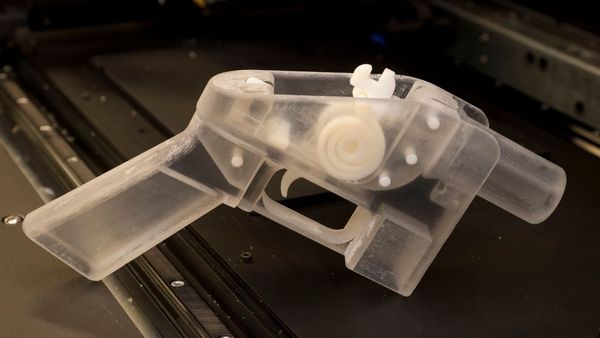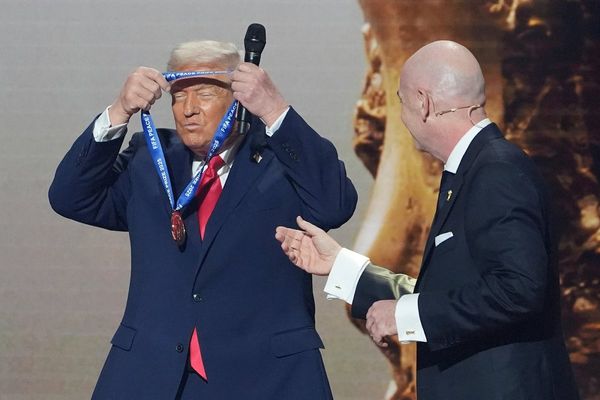Near the third-base line on a back field at the Chicago Cubs complex, president of baseball operations Jed Hoyer and most of the major-league coaching staff observed batting practice during a cool, breezy late morning workout Tuesday.
The field offered glimpses of the Cubs’ potential future: Top prospects Cristian Hernández and Owen Caissie took batting practice off a machine, their tall frames slicing the ball to the wall with smooth swings. As Major League Baseball’s lockout persists while the sides meet in Jupiter, Fla., the Cubs prospect minicamp created a modicum of spring training normalcy.
Vice president of player development Jared Banner was among the team personnel taking in Tuesday’s workouts. This time a year ago, Banner joined the Cubs as VP of special projects. He utilized his time learning different areas within the organization and getting to know the Cubs staff and players.
Those experiences culminated with a change in title and responsibilities last month, when Banner was named VP of player development. He replaced Matt Dorey, who took over as VP of player personnel.
“It just felt like this was a bit of a natural fit with some of the other changes that we had going on,” Banner told the Tribune on Tuesday. “I’m excited about the challenge.”
Banner’s 14 years of experience include two seasons as the New York Mets executive director of player development and 11 years in the Boston Red Sox organization.
He described his player development philosophy as evidence-based.
“We want to have real research reasons for doing the things that we do,” Banner said. “We don’t want to do things just because that’s the way they’ve always been done, and we want to be creative and innovative about how we go about doing that. So just focusing on getting these guys a little bit better every day and having a well-rounded approach to it.”
Coming from outside the organization, Banner has been particularly impressed by how well the Cubs research and development department is embedded into all other departments and everything the Cubs do.
“That group taught me so much this year,” Banner said. “We have a lot of resources here that we can use to help get our players better, and I want to make sure we use every single one.
“Just knowing what’s important, which areas are more predictive of future success than others and just know where to spend your time, that’s probably the most important piece.”
The Cubs’ success between 2015 and 2020 centered largely on developing homegrown talent and supplementing those ascending players through free agency. They again have young players at the lower levels who could be important pieces of the big-league team in the future, but the Cubs must hit on some of those prospects. Developing pitchers can be notoriously challenging for any organization, though the Cubs saw some positive trends at the big-league level in 2021 with Adbert Alzolay, Justin Steele and Keegan Thompson throwing quality innings.
Development is rarely linear, regardless of position, but continuing to develop the next core group of players is important for the Cubs to win consistently. Finding pitching internally is always a key part of that equation. Banner commended the work of assistant general manager and VP of pitching Craig Breslow and the minor-league pitching infrastructure.
“We do have a pitching plan and then there’s a vision, but as a part of that vision, we have to break down each pitcher individually,” Banner said. “For some players, they go into a velocity bucket. For others, they go into a command bucket. For others, they go into a shape bucket, whatever it may be, that is going to be the key for them to improve enough to move to the next level.
“It is definitely case by case, but at the same time, like everything else we do — the position player side too — it’s all evidence-based and it’s pretty methodical and process-oriented.”
In some ways, teams and players still are feeling the affects from the canceled 2020 minor-league season. While players continued to develop physically, it’s not the same as getting game reps and pitching in non-simulated situations. For many prospects it meant more than a year without game action.
All of those circumstances create challenges in evaluating many players’ 2021 minor-league seasons, especially if it represented their first year of professional baseball. For Banner, focusing more on experience level and less on age is part of that equation, but he acknowledged “there’s no real way to tell.”
While uncertainty looms over the major-league season starting on time, Banner is excited and grateful to have a full spring training and minor-league season ahead after what the farm system endured the last couple of years.
“We don’t want to make up for lost time, but we also want to make up for lost time, right?” Banner said. “So we will be pushing the envelope and trying to prepare these guys to go have success out on the field as hard as we can.”







